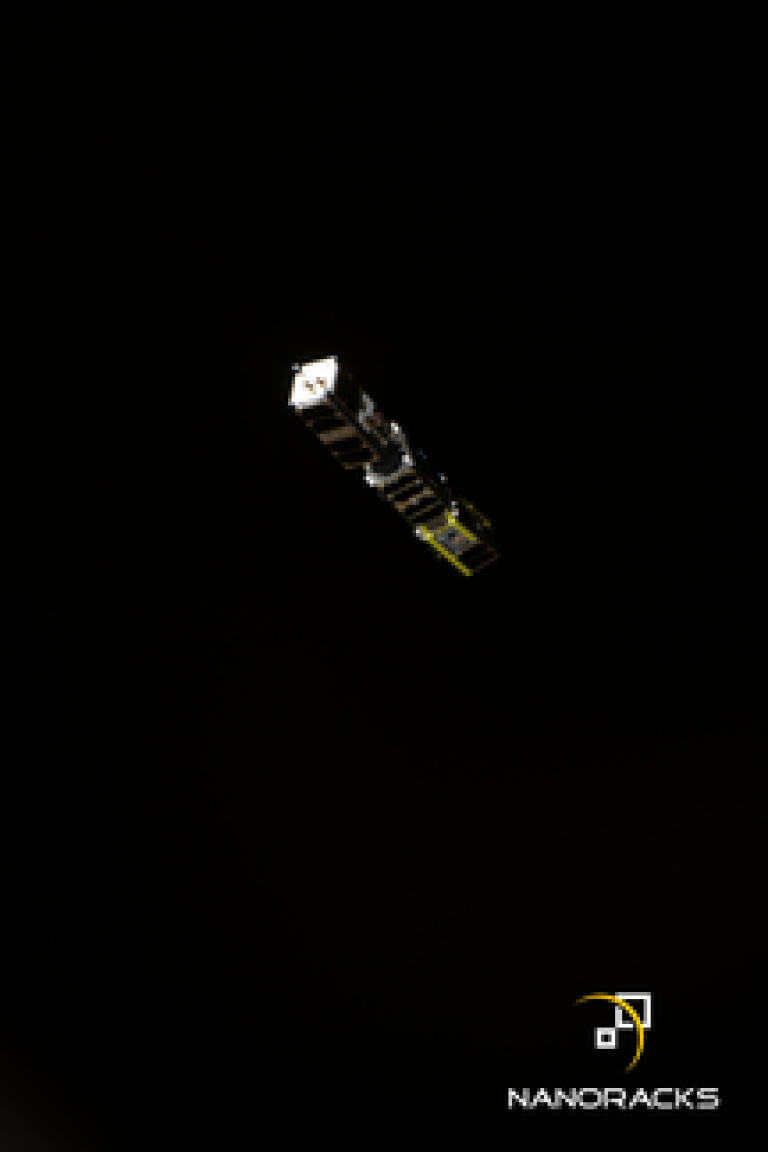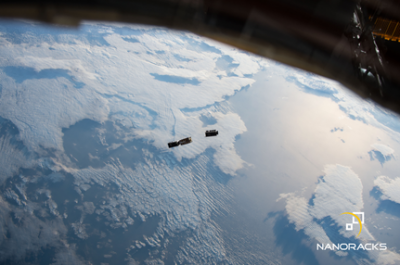UCL Build and Launch Cube Satellites
8 June 2017
Last week saw the deployment of 28 CubeSats from the International Space Station as part of the QB50 mission.
 UCL IRDR Lecturer Dr Robert Wicks is
the project manager of the nine UCL scientific instruments flying on this
mission. The Ion Neutral Mass Spectrometer (INMS), designed and built at UCL,
measures the concentrations of Oxygen, Nitrogen, and Nitrous Oxide ions in the
thermosphere, the top layer of the atmosphere, as the CubeSats descend from a
400km altitude until they are destroyed at an altitude of around 200km. These
will form the first measurements of atmospheric composition from satellites at
these altitudes, and will provide our first ever look at the transport of these
ions around the world. Ions of Oxygen, Nitrogen, and Nitrous Oxide are
generated near the North and South poles by the aurora and are then transported
around the globe by very high-altitude winds. Tracking how these molecules move
around in the thermosphere will help us to understand the chemistry and weather
in the top layer of the atmosphere, and enable us to better predict atmospheric
drag on satellites and the impact of space weather on the atmosphere.
UCL IRDR Lecturer Dr Robert Wicks is
the project manager of the nine UCL scientific instruments flying on this
mission. The Ion Neutral Mass Spectrometer (INMS), designed and built at UCL,
measures the concentrations of Oxygen, Nitrogen, and Nitrous Oxide ions in the
thermosphere, the top layer of the atmosphere, as the CubeSats descend from a
400km altitude until they are destroyed at an altitude of around 200km. These
will form the first measurements of atmospheric composition from satellites at
these altitudes, and will provide our first ever look at the transport of these
ions around the world. Ions of Oxygen, Nitrogen, and Nitrous Oxide are
generated near the North and South poles by the aurora and are then transported
around the globe by very high-altitude winds. Tracking how these molecules move
around in the thermosphere will help us to understand the chemistry and weather
in the top layer of the atmosphere, and enable us to better predict atmospheric
drag on satellites and the impact of space weather on the atmosphere.
Three QB50 CubeSats launched from the International Space Station. The INMS is the black cylinder that can be seen protruding from the ends of two of the satellites. (Credit NASA)

Dr Robert Wicks is Lecturer in Space Risks at the UCL IRDR. Learn
about space risks in the new IRDR
MSc: Space Risks and Disaster Reduction.
More information about launching cube satellite can be found here.
 Close
Close






